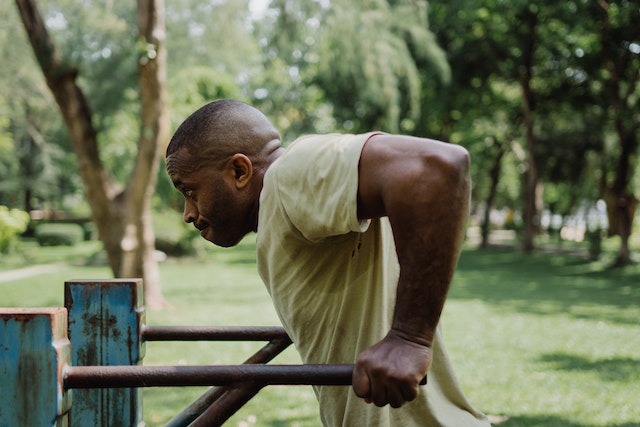In the realm of bodyweight exercises, dips and push-ups are often compared, with many calisthenics enthusiasts asserting that dips take the crown as the more demanding exercise. Let’s delve into the reasons behind why dips are considered harder than push-ups and uncover the challenges they present for those seeking to master these powerful movements.
Muscle Groups Involved: Targeting Specific Strength
Dips and push-ups both engage the upper body muscles, but their primary targets differ significantly. Dips heavily emphasize the chest, triceps, and front shoulders, making them an intense pressing movement. As your body descends and rises between parallel bars or surfaces, these muscles must work together to support and lift your entire body weight. In contrast, push-ups engage a broader range of muscles, including the chest, triceps, shoulders, core, and even the back for stabilization. The more targeted focus of dips on pressing strength contributes to their higher difficulty level.
Higher Weight Load: Lifting Your Body Weight
One of the primary reasons why dips are harder than push-ups is the sheer weight load they impose on the upper body. In a dip, you lift your entire body weight, which can be a significant challenge, especially for those who are new to calisthenics or have a higher body weight. In contrast, during a push-up, the body is distributed between four points of contact (hands and feet), reducing the load on each individual limb. This makes push-ups more accessible for beginners and allows for a smoother progression.
Stability and Balance: Balancing on Parallel Bars
Performing dips on parallel bars or surfaces adds an element of stability and balance that can be challenging, particularly for beginners. Maintaining proper form and avoiding swinging or tilting during dips requires a strong core and control over your body movements. In contrast, push-ups are performed on a stable surface with four points of contact, making it easier to maintain balance and control.
Limited Variations: Fewer Progression Options
While both dips and push-ups have various progression options, the range of advanced dip variations is relatively limited compared to push-ups. For push-ups, you can progress to one-arm push-ups, handstand push-ups, or even planche push-ups, offering a broad spectrum of challenges. On the other hand, dips’ advanced variations, such as ring dips or weighted dips, may not be as extensive. This limited progression can lead to a perception that dips become “harder to progress” once you’ve mastered the basics.
Joint Stress: Strain on Shoulders and Wrists
Dips place a higher demand on the shoulders and wrists, especially when performed with poor form or without adequate strength. The pressure on these joints can lead to discomfort or even injury, making dips a more daunting exercise for some individuals. Push-ups, with their more even distribution of weight and larger muscle engagement, often feel gentler on the joints, making them a preferred starting point for many beginners.
Conclusion
The reasons why dips are harder than push-ups stem from their targeted muscle groups, higher body weight load, balance challenges, limited variations, and joint stress. While dips may present a more significant challenge, they also offer unique benefits in building pressing strength and sculpting the upper body. Both exercises have their merits, and incorporating both into your training routine can provide a well-rounded upper body workout that unlocks your calisthenics potential.





